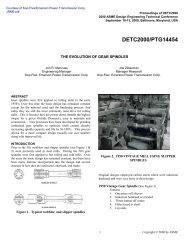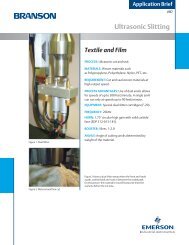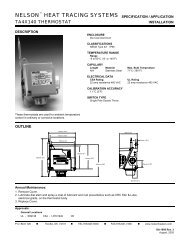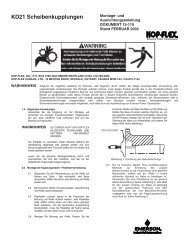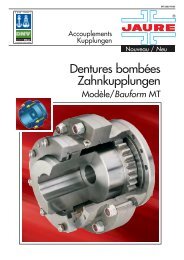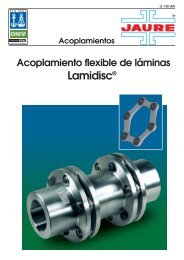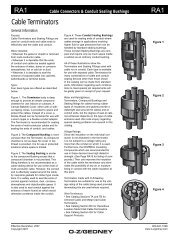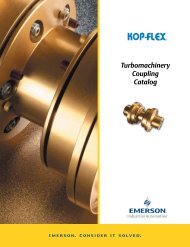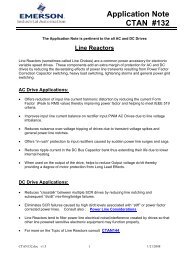Kop-Flex Industrial Coupling Product Catalog - Form 8887E
Kop-Flex Industrial Coupling Product Catalog - Form 8887E
Kop-Flex Industrial Coupling Product Catalog - Form 8887E
Create successful ePaper yourself
Turn your PDF publications into a flip-book with our unique Google optimized e-Paper software.
Gear Spindles<br />
Improved Contact Ground Gear (CGG) Tooth<br />
CGG corrects carburized tooth distortion in the internal<br />
and external gear tooth flanks. The CGG benefits include:<br />
• Optimum tooth form for external and internal<br />
gearing<br />
• Optimum tooth contact<br />
• Optimum torque capacity<br />
• Optimum gear life<br />
Contact Ground Gearing was developed to satisfy the<br />
changing needs of the steel industry as a result of<br />
increased torque and misalignment of gear spindles.<br />
What will CGG do for your mill?<br />
• CGG gearing ground to AGMA 10-11 for improved<br />
wear life and reduced tooth spalling<br />
• Unique process and tooth design (patent pending)<br />
reduced tensile stress due to grinding<br />
• Grinding increases number of teeth in contact,<br />
resulting in longer operating life<br />
• More teeth in contact equals greater torque capacity<br />
and larger service factor<br />
• Reduced maintenance cost and down time<br />
• Reduced distortion through grinding flank correction<br />
The evolution of gear spindle design<br />
During the mid 60’s <strong>Kop</strong>-<strong>Flex</strong> ® brand<br />
couplings pioneered the use of gear<br />
spindles in hot rolling and cold rolling<br />
mills. Over the years the basic design has<br />
remained constant with the exception of<br />
the tooth hardening processes.<br />
Original designs employed high carbon<br />
steels which were induction hardened.<br />
The associated quench process resulted in<br />
distortion. To reduce the distortion, Nitriding<br />
was introduced. Nitriding provides a hard<br />
case R C<br />
55/64 and very little distortion.<br />
The case ranges from .015” to .030”<br />
(0.38-0.76mm).This process was good<br />
for fine pitch gearing in bar, rod and cold<br />
mills. For roughing mill and hot strip mill<br />
spindles with course pitch teeth a deeper<br />
case is required. These spindles employ<br />
carburized gearing which produces deep<br />
cases .060” to .250” (1.5-6.4mm) R C<br />
55/62.<br />
Again like induction hardening during the<br />
quench operation distortion occurs to the<br />
actual tooth and also pitch diameter.<br />
Misalignment causes spalling<br />
During operation gear spindles are subject to high<br />
misalignment. At 2 degrees misalignment, only 40%<br />
of the teeth carry the load. The limited number of teeth<br />
carrying the load combined with the distortion resulting<br />
from carburizing can cause some teeth to be more highly<br />
loaded. This can result in subsurface shear and spalling.<br />
The result of this distortion shows up as areas of spalling<br />
(see photo at left).<br />
198<br />
Visit www.emerson-ept.com





